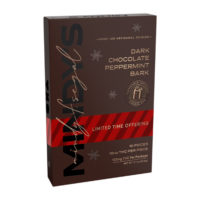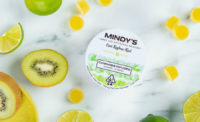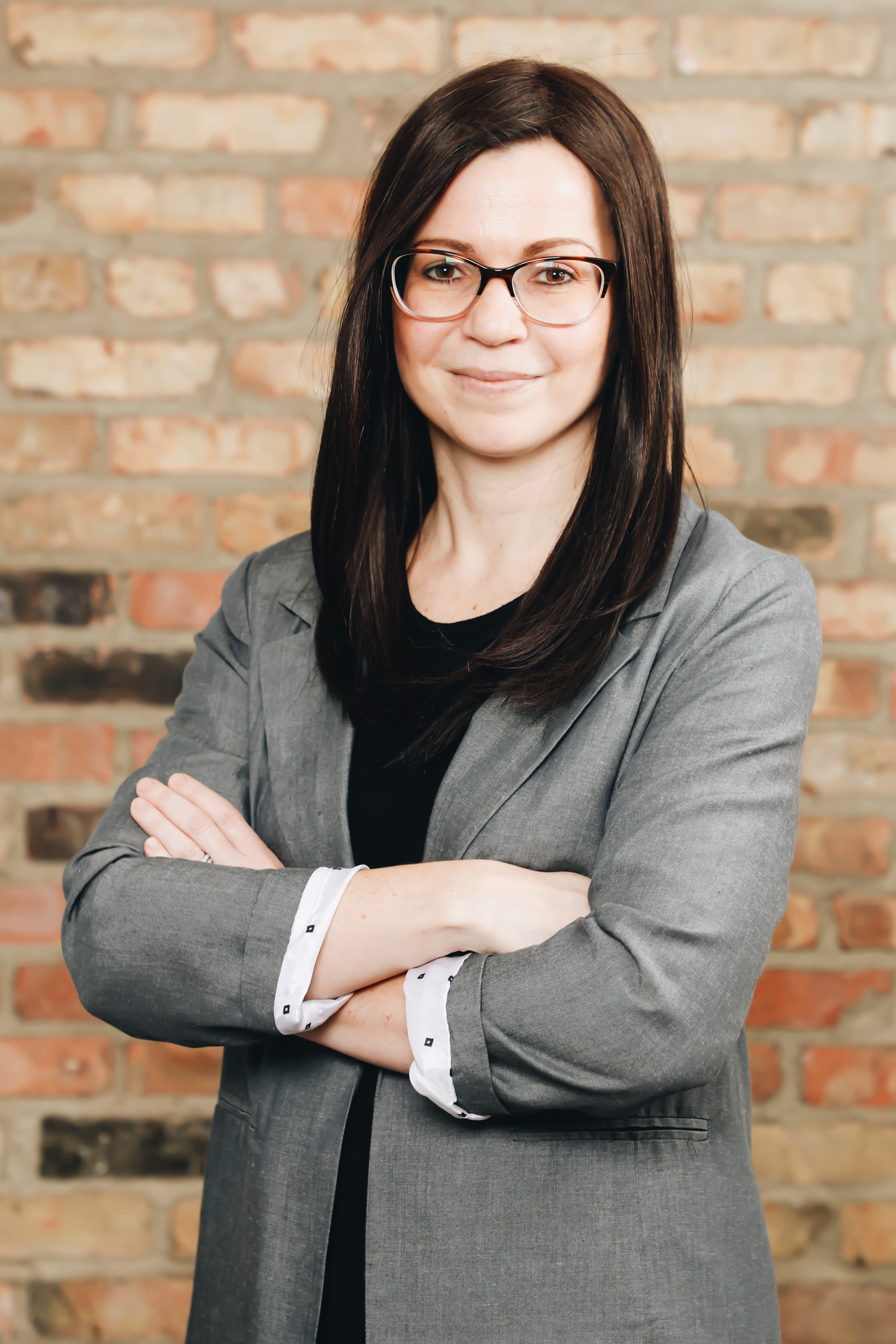Cannabis infused products manufacturing is quickly becoming a massive new market. With companies producing everything from gummies to lotions, there is a lot of room for growth as consumer data is showing a larger shift away from smokable products to ingestible or infused products.
This is the fourth article in a series where we interview leaders in the national infused products market. In this third piece, we talk with Stephanie Gorecki, vice president of product development at Cresco Labs. Stephanie started with Cresco in 2019 after transitioning from an award-winning career in traditional foods CPG. She now heads up product development where she manages R&D for Cresco, a multi-state operation with tremendous SKU variety.
Next week, we’ll sit down with Lisa McClung and Glenn Armstrong from Coda Signature. Stay tuned for more!
Aaron Green: Stephanie, how did you get involved at Cresco Labs?
Stephanie Gorecki: A few years ago, CBD became the most talked about ingredient in the food industry. CBD-infused food headlines appeared in most of the trade magazines. I have always been curious about working in the cannabis space, and not just with CBD, but THC and other cannabinoids. I researched technical seminars and came across the cannabis infused edibles short course put on by the Institute of Food Technologists.

I attended the short course in April of 2019. I realized that to be hands-on with cannabis in the near future, I would need to join an organization that was already in the space. The space was highly regulated which meant that research in the mainstream food and beverage space was limited.
Immediately following that seminar, I began to look for opportunities near where I lived. That’s when I came across the Cresco Labs career opportunity. The Director of Food Science position appeared to be a good match. I applied for the position and went through the interview process. Approximately two months after attending that seminar, I joined Cresco Labs.
Aaron: Awesome! It’s a cool story. In your role, how do you think about developing products that differentiate in the market?
Stephanie: There are many opportunities for brand differentiation in cannabis right now. There is a focus on high bioavailability and water solubility and how that translates to onset times once consumed. Many of these technologies utilize ingredient technologies and systems that I have experience with from my past work in the flavor industry.
Gummies and jellies are a great infusion matrix to start with because of their shelf-life stability. There are a variety of formulation techniques that can be used to deliver on product differentiations. There is an abundance of flavor varieties, colors, processing steps and cannabinoid ratios that can be baked into a formula to make that product line unique.
Here in the cannabis space, SKU variety is essential. It’s exciting to be a part of a company where we develop products that appeal to a variety of customer wants and needs.
Aaron: In that vein, what’s your process then for creating a new product?
Stephanie: I’ll start with how we develop an edible. Most of my background is in this type of product development, but the same process is applied to how we develop and extract vape, topical, flower SKU, or ready-to-smoke type products. We follow a similar stage/gate process utilized by most CPG companies.
 Marketing typically presents our product development team with a brief on a new concept based on how they’ve read the needs of the market. There are opportunities for us to come to marketing with ideas for innovation, too. The product development team regularly works in our processing facility, so we as a team are aware of the different capabilities of each state and production line. During the briefing phase, we determine what is needed to be achieved and the parameters that the team would like the new product to deliver on.
Marketing typically presents our product development team with a brief on a new concept based on how they’ve read the needs of the market. There are opportunities for us to come to marketing with ideas for innovation, too. The product development team regularly works in our processing facility, so we as a team are aware of the different capabilities of each state and production line. During the briefing phase, we determine what is needed to be achieved and the parameters that the team would like the new product to deliver on.
For edibles, we begin our development work at The Hatchery. The Hatchery is our non-infused product development space that we utilize outside of our processing facility. In this space, we have several pieces of pilot equipment that allow us to scale and create prototypes that are highly representative of what our finished product will look like. For vapes, flower SKUs and RTS (ready-to-smoke) products, development and processing trials happen within our cultivation center.
All infusions are conducted in our licensed processing center. We also conduct stability testing and analytical testing in-house on our products. Our analytical lab is amazing – we have talented chemists and the ability to run GCMS, HPLC, microbiological testing, and many other analytical tests that are important for ensuring consistency and product uniformity.
Aaron: Can you expand on a point about testing? How do you think about testing at the different points in your manufacturing or production process?
Stephanie: Testing comes in several forms. We focus heavily on analytical testing since that does not involve product consumption. Potency uniformity and consistency is critical for edibles. For infused products, we have one shot at hitting our potency – infusion science is extremely important for us. Our gummies and chocolates cannot be re-worked, so hitting our potency range on the first attempt is important. If we miss the target, the product has to be destroyed.
We have methods developed to conduct in-process potency testing where we can. With the processes and infusion methods that we have implemented, we are rarely outside of our targeted potency ranges.
Aaron: Okay, awesome, then, can you walk me through your experience with one of your most recent product launches?
Stephanie: We recently launched Mindy’s Dark Chocolate Peppermint Bark, a limited time offering for our Mindy’s chocolate line. There’s a series of commercialization trials that we will conduct prior to launch. We use these trials as an opportunity to train our production teams on the new manufacturing instructions and processes.
 When it comes to launching products, our technical teams are very hands on with new product introductions. Since we cannot manufacture product in one state and ship it to another state, we have to build processing centers and secure the proper licenses in every state that we’d like to operate in. When we have a new product ready to launch in a new state, our team works with Operations on the tech transfer piece. We’re there on-site during launches to oversee and train on the entire process until our teams are comfortable with manufacturing and packaging the new SKUs.
When it comes to launching products, our technical teams are very hands on with new product introductions. Since we cannot manufacture product in one state and ship it to another state, we have to build processing centers and secure the proper licenses in every state that we’d like to operate in. When we have a new product ready to launch in a new state, our team works with Operations on the tech transfer piece. We’re there on-site during launches to oversee and train on the entire process until our teams are comfortable with manufacturing and packaging the new SKUs.
We monitor launches carefully to ensure product looks as it should before and after leaving our facility for sale in licensed dispensaries across the state. When there are opportunities to optimize a process post-launch, we will do what we can to make the process work as well as possible for the teams producing our products.
Aaron: Okay, so next question is, how do you go about sourcing ingredients for your infused products?
Stephanie: We manufacture our oils and extracts in house, and then source other ingredients externally. We have a supplier quality assurance process for new supplier approval, and we have documentation needs that we need each supplier to be able to deliver on.
Several of our suppliers have invested in research and development of products that will help us to meet our deliverables in the cannabis industry. Our suppliers, at times, have provided applications support in order to help with our speed to market and early phase prototyping. These types of partnerships are essential to us being able to make quick modifications and decisions on ingredients such as flavors and colors.
Aaron: Can you give me an example of a challenge that you run into frequently? This could be a business challenge or a cannabis-related challenge.
“I’m a scientist at heart. I look forward to more spending on cannabis research to show how THC and other cannabinoids can be used to treat a variety of conditions.”Stephanie: A big challenge for us and other multi-state cannabis operators are the variations in compliance regulations state-to-state. We have compliance managers in every state who work to ensure we are meeting all of the state regulations. Our packaging reviews are in-depth because of all the language that needs to be included on our packaging.
Each state needs its own packaging with proper compliance labeling. Some states require a cannabis warning symbol of a certain type. If we sell Mindy’s Gummies in 8 flavors and THC mg SKUs in four states, that is 32 different pieces of artwork that need to be managed and cross-checked for accuracy. We have 32 separate pieces of packaging for this one line of products. We have many lines of products with multiples strains (flower and vapes) and flavors (edibles).
Aaron: You mentioned packaging, do you do all of your packaging in house?
Stephanie: We design our packaging artwork in-house. We have a creative team who works on our product artwork, and then a team of cross-functional members tasked with packaging editing and review. Packaging reviews go through multiple rounds before being released for printing. We source a variety of packaging depending on the needs of the product going into the packaging. For edibles, our packaging has to be opaque. Product cannot be seen through the packaging in most states. This is great for our products that are made with natural colors that may be light sensitive.
All of our packaging needs to be child resistant. This limits the amount of packaging variety that we have, but this is a big opportunity for packaging developers. We want and need more sustainable forms of packaging that are differentiated from other packaging forms currently on the market.
Aaron: What trends are you following in the industry personally?
Stephanie: Cannabis trends that are of interest to me personally are fast-onset and water solubility technology. There have also been many discussions surrounding minor cannabinoids and how those can be blended together to drive customer experience.
 There are traditional food trends that also impact how we formulate. Our Mindy’s Edibles line is flavor forward. The flavors are sophisticated. In the Mindy’s line, you won’t find a generic orange or grape flavor. Instead, you’ll find a Lush Black Cherry or Cool Key Lime Kiwi Flavor. This flavor development work starts with Mindy Segal, who is the face and talented James Beard award-winning chef behind our Mindy’s Edibles line of products.
There are traditional food trends that also impact how we formulate. Our Mindy’s Edibles line is flavor forward. The flavors are sophisticated. In the Mindy’s line, you won’t find a generic orange or grape flavor. Instead, you’ll find a Lush Black Cherry or Cool Key Lime Kiwi Flavor. This flavor development work starts with Mindy Segal, who is the face and talented James Beard award-winning chef behind our Mindy’s Edibles line of products.
Aaron: Okay, so the last question I have for you is, what are you interested in learning more about?
Stephanie: I’m a scientist at heart. I look forward to more spending on cannabis research to show how THC and other cannabinoids can be used to treat a variety of conditions. People use cannabis for many reasons: to relax, to ease aches or pains, etc. It’s exciting to lead part of our technical team during a period of time where cannabis is rapidly growing and is of great interest and increasing acceptance across our country and in the world.
Aaron: Okay. So that’s it. That’s the end of the interview!





